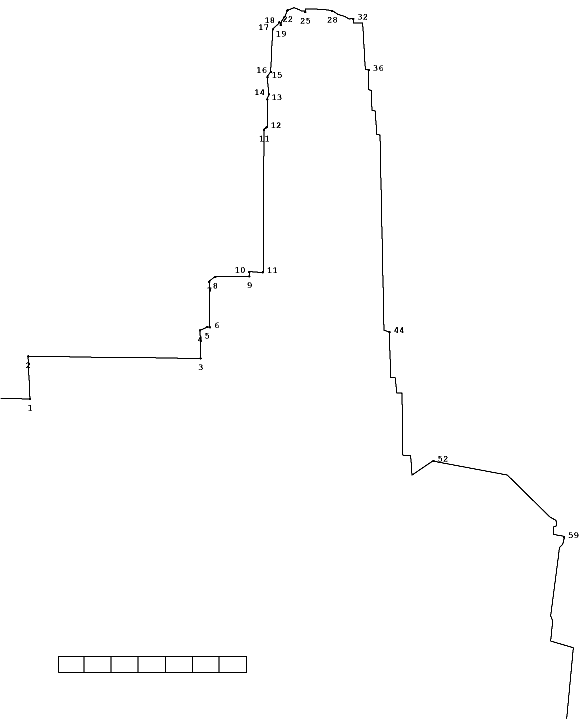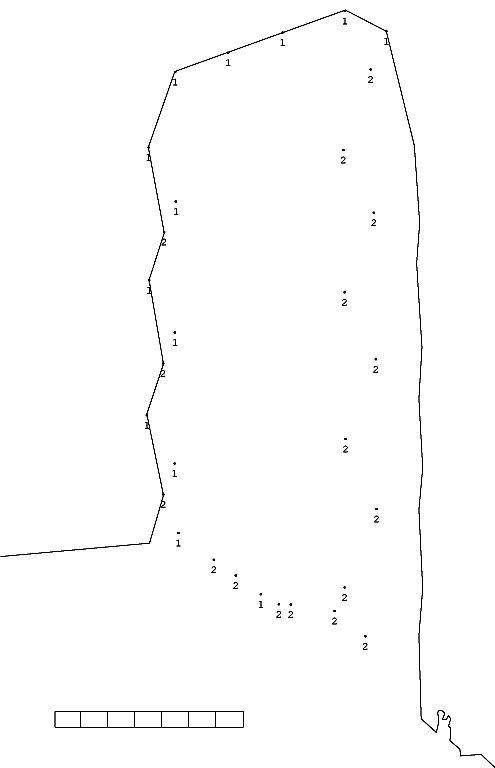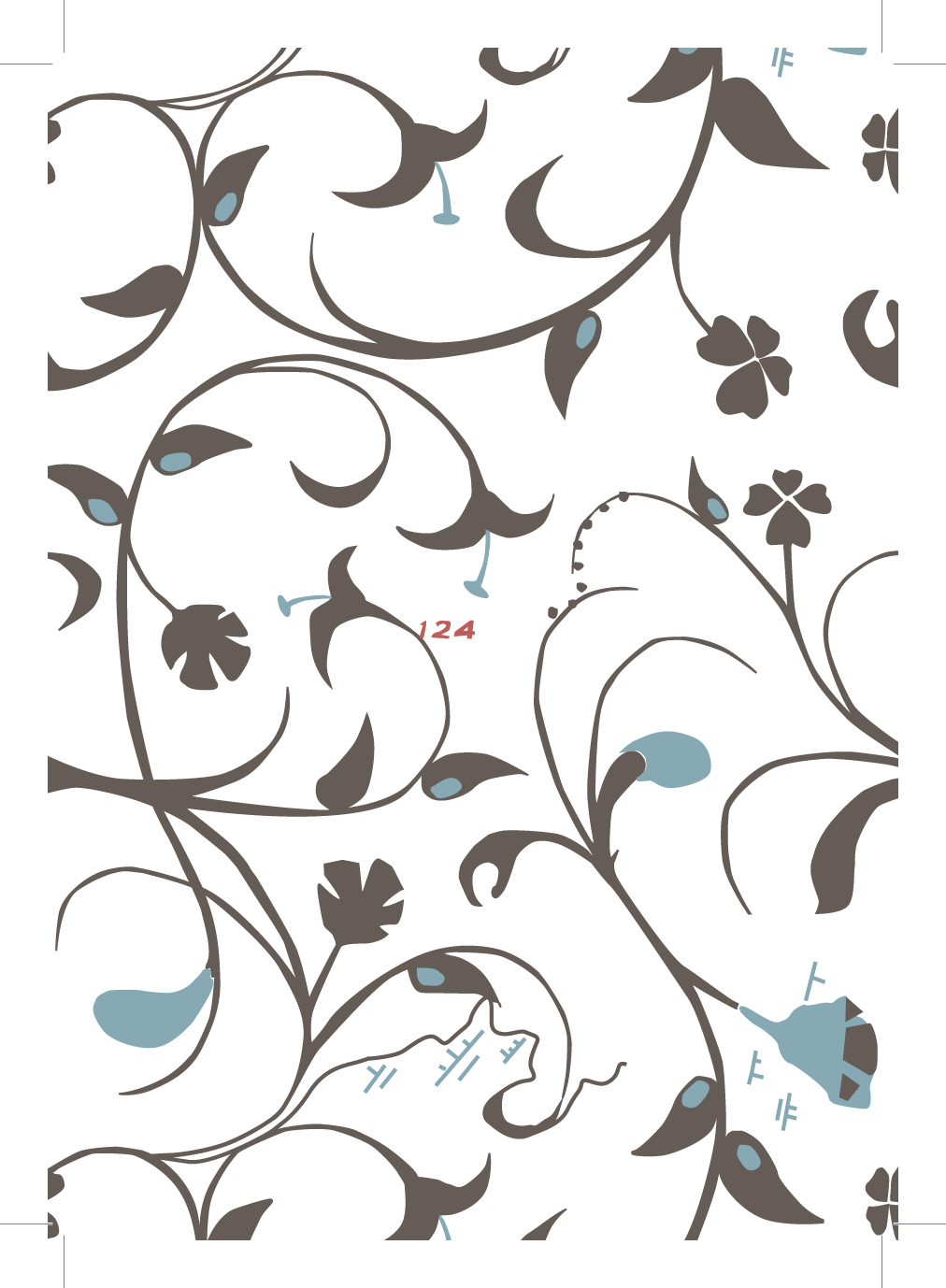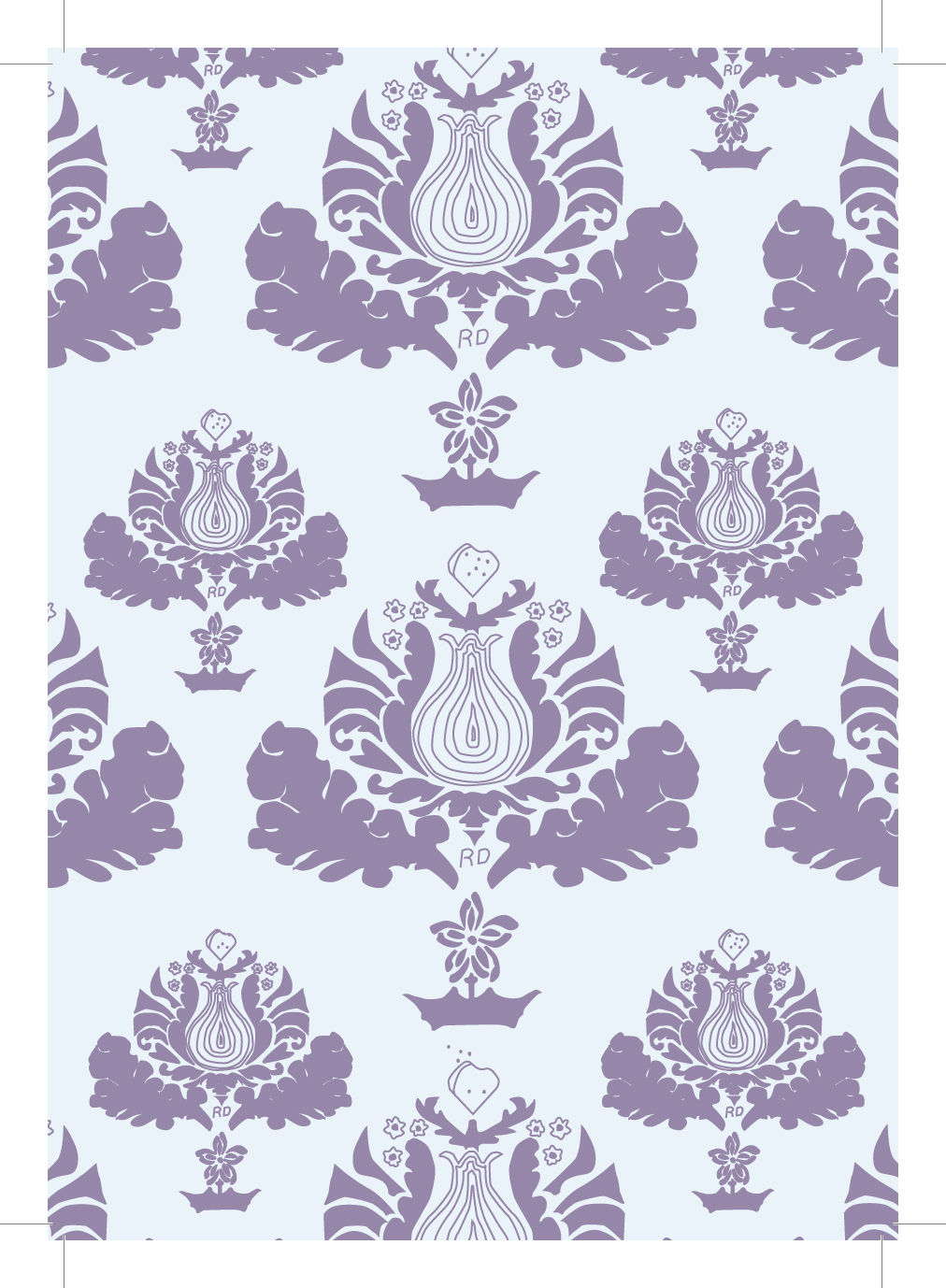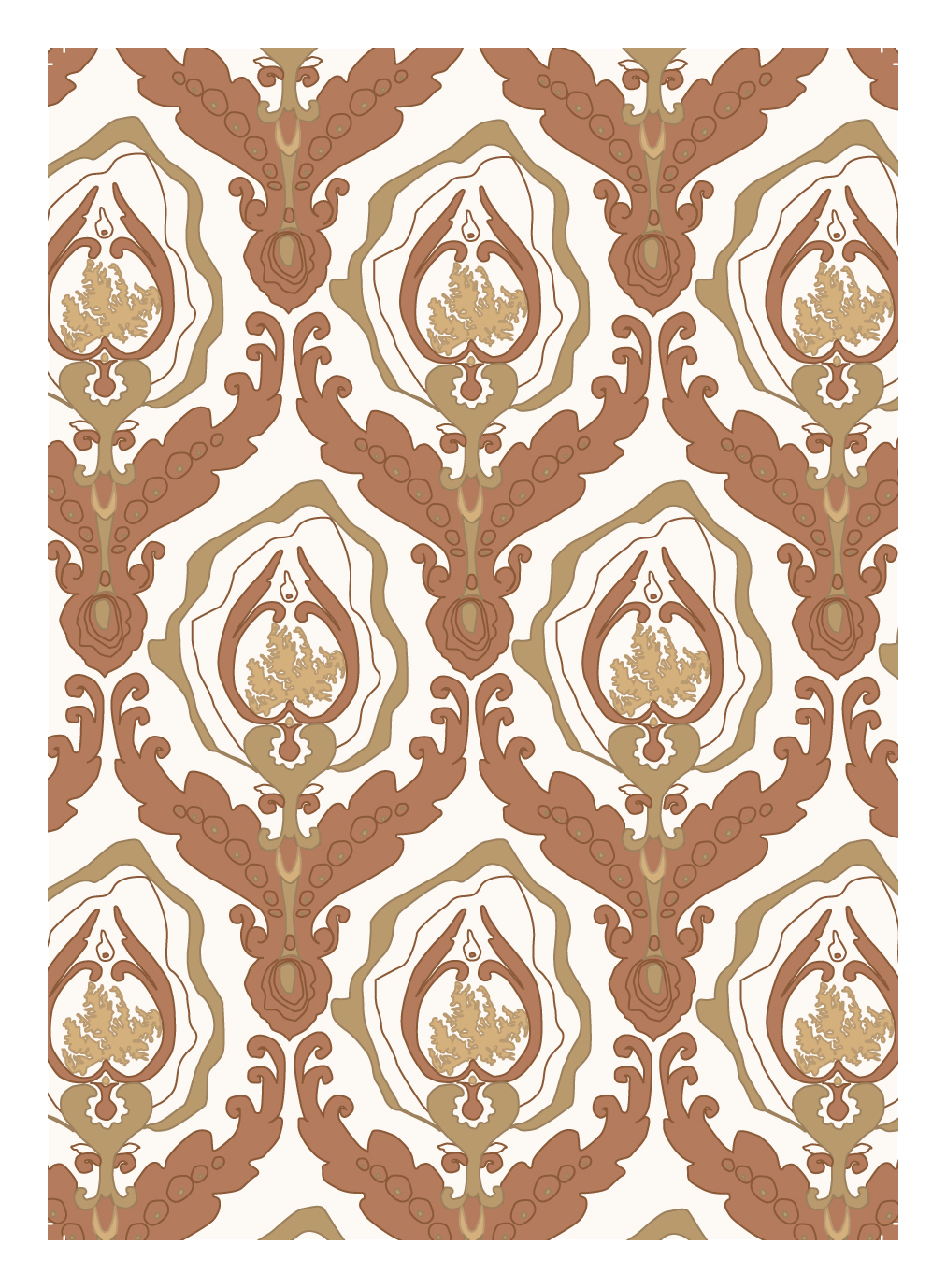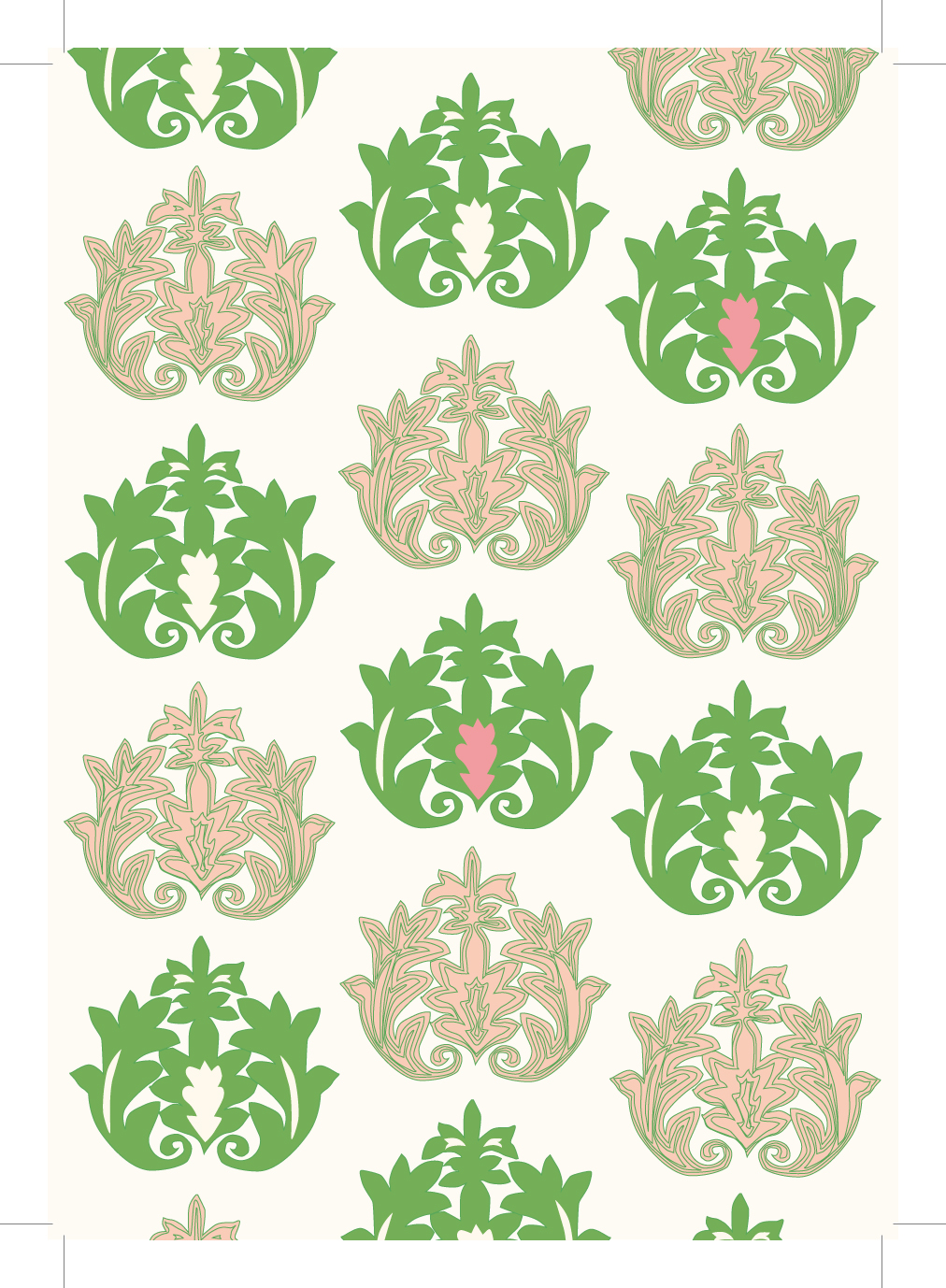Laura F. Gibellini
A PLACE, CONSTRUCTED
0. Foreword. Becoming Place [fn:<9115>]<1>[/fn]
When one thinks about place, it may be essential to consider, or even to accept without reservation, place’s transmutable nature: its porosity, its inconsistency, its fluidity. Place 2 does not exist by itself as a fully formed whole that precedes the intrusion of human beings. Instead, it takes place as an event: it is something one happens upon, it is a moving target, an achievement in progress.
The notion becoming place can help define the way place will be addressed in this work: place as a process, as something yet to be... This document itself was conceived as a mapping of some fundamental considerations implicit in my own artistic practice. While I will not be discussing that practice itself directly, this document focuses on similar concerns, ones which pertain to the notion of place, and which involve reflection and experience, thought and materialization. The text of this document considers, from the paradoxical point of view of place itself, the fundamental clash between the ideal form and its actual practice, like the classic radical clash that occurs in poetry.
The Place, in the World
The relationship between an internally conceived world and its inevitable exposure to the exterior world is organized fundamentally around the notion of place. One tries to appropriate a place as if it were a singular territory, both as a psychological strategy that seems to provide clarity and security and as a declaration of intent to the world. This world is always “another one”, different from the world we conjure and expect.
Place articulates a relationship –between the world conceived in the interiority of the self, and the home, and the exteriority that circumscribes this state of being.
It is not the world which is in the place, but the place which is in the world. 3
Lately this world appears especially dispersed, accelerated, fragmented; but also increasingly intimately familiar. In the postmodern era, the place is constructed somewhere between our nostalgia for a lost, unattainable mythical world 4, and our desire and drive to have full access to the surrounding world.
Place escapes, increasingly, from the specifics of local references. It dissociates itself from purely representational contexts while generating spaces where thoughts, narratives, events and art can develop. This quality implies a sense of place that can neither exist exclusively as a territory nor can be fully and explicitly mapped. The following is devoted to such a place.
Laura F. Gibellini
A PLACE, CONSTRUCTED
0. Foreword. Becoming Place
When one thinks about place, it may be essential to consider, or even to accept without reservation, place’s transmutable nature: its porosity, its inconsistency, its fluidity. Place 2 does not exist by itself as a fully formed whole that precedes the intrusion of human beings. Instead, it takes place as an event: it is something one happens upon, it is a moving target, an achievement in progress.
The notion becoming place can help define the way place will be addressed in this work: place as a process, as something yet to be... This document itself was conceived as a mapping of some fundamental considerations implicit in my own artistic practice. While I will not be discussing that practice itself directly, this document focuses on similar concerns, ones which pertain to the notion of place, and which involve reflection and experience, thought and materialization. The text of this document considers, from the paradoxical point of view of place itself, the fundamental clash between the ideal form and its actual practice, like the classic radical clash that occurs in poetry.
The Place, in the World
The relationship between an internally conceived world and its inevitable exposure to the exterior world is organized fundamentally around the notion of place. One tries to appropriate a place as if it were a singular territory, both as a psychological strategy that seems to provide clarity and security and as a declaration of intent to the world. This world is always “another one”, different from the world we conjure and expect.
Place articulates a relationship –between the world conceived in the interiority of the self, and the home, and the exteriority that circumscribes this state of being.
It is not the world which is in the place, but the place which is in the world. 3
Lately this world appears especially dispersed, accelerated, fragmented; but also increasingly intimately familiar. In the postmodern era, the place is constructed somewhere between our nostalgia for a lost, unattainable mythical world 4, and our desire and drive to have full access to the surrounding world.
Place escapes, increasingly, from the specifics of local references. It dissociates itself from purely representational contexts while generating spaces where thoughts, narratives, events and art can develop. This quality implies a sense of place that can neither exist exclusively as a territory nor can be fully and explicitly mapped. The following is devoted to such a place.
[5] Stéphane Mallarmé, ‘Un coup de dés jamais n’abolira le hazard’, trans. by A. S. Kline, 2007. http://www.poetryintranslation.com/PITBR/French/MallarmeUnCoupdeDes.htm (Transcript by Laura F. Gibellini following the original as closely as possible), [accessed 10 November 2011].
[6] Ignacio Castro, ‘Clima y Acción’, in Informes Sobre el Estado del Lugar, ed. by Ignacio Castro, trans. by Laura F. Gibellini (Gijón: Caja de Asturias, Obra Social y Cultural de Oviedo, 1998) p. 21.
[7] In earlier texts as well as in my doctoral dissertation entitled Local in Global. Postmodern Paradoxes of Place I have referred extensively to the political dimension of the map. In this case I chose to focus only on what relates to the notion of the ‘denial of place’. This decision should not be considered as a refutation of the conceptual complexity of the map itself. Doctoral dissertation accessible in spanish at http://eprints.ucm.es/12343 [accessed 10 November 2011].
[8] Gilles Deleuze and Félix Guattari, A Thousand Plateaus: Capitalism and Schizophrenia, (London and New York: The Continuum International Publishing Group Ltd, 2004) p. 13.
[9] Based on the notion of progress — that technological advances involve progressive accuracy when reality is represented visually.
[10] D.F. McKenzie, Bibliography and the Sociology of Texts. (London: The British Library, 1986) pp. 34-39, quoted in J. B Harley, ‘Reconstructing the Map’, Cartographica, nº 26, (Toronto: University of Toronto Press, 1989) p. 7.
[11] Defined by Euclid as ‘that which has no part’, http://mathworld.wolfram.com/Point.html [accessed 10 November 2011].
[12] I refer here to the topographical lines that connect points of equal value (height or altitude) and define the contours and the location of a particular landform. The topographic lines are displayed as patterns that indicate and refer to a specific geographical condition, manifesting themselves as highly abstract representations of it.
[13] Peter Sloterdijk, En el Mundo Interior del Capital. Para una Teoría Filosófica de la Globalización (Madrid: Biblioteca de Ensayo, Siruela, 2007) p. 49. (Peter Sloterdijk, Im Weltinnenraum des Kapitals. Für eine philosophische Theorie der Globalisierung (Frankfurt am Main: Suhrkamp Verlag, 2005).
01. The Denial of Place
NOTHING
of the memorable crisis
where the event
matured accomplished in sight of all non existenthuman outcomes
WILL HAVE TAKEN PLACE
a commonplace elevation pours out absence
BUT THE PLACE. [5]
In the place the world is hinted, a perspective of the entire cosmos. [6]
Place as becoming refers to place as a project, just like this 'work'. It implies a place that is fulfilled in the drawing of a map of nowhere.
The denial of place in turn involves the disassociation of place from the physical world. It manifests itself as a state of mind that is oblivious to the specific place, implying a sort of structural map alien to territory. The denial of place is such a reflection about itself that nothing but the place takes place in it. The place detaches from the events it describes in a denial of specific references that disregards both its material nature and that of its potential inhabitants.
It is for this nonspecific quality that a place may no longer manifest itself as a solely territorialized element, but as an imminently delocalized and unspecific matter. This implies a place that is not always focused and strategically located, but one that may be positioned through conceptualized coordinates rather than experiential ones.
The denial of place signals a place that exists nowhere but that could happen anywhere.
The Map [7]
The map does not reproduce an unconscious closed in upon itself, it constructs the unconscious. [8]
If one thinks about the representation of place in its most basic, and perhaps, most typified form — the map — one would find a number of conventional mechanisms that not only describe places but also generate them. Maps imply a particular perspective of a respective place. Behind the proposed objectivity of cartography stands a frame through which the world is perceived and legitimated.
A map anticipates a place.
Considered a scientific endeavor [9] that produces a true correspondence between the model and the territory it represents, the map also involves norms and values of social order, not merely geographic ones. He who draws the territory conquers it as an image that has been placed within his reach. And he does so by projecting a very specific understanding of it and its inhabitants. The map is then a way to define and specify a series of social relations, of power and organization that arise outside of the place and precede it.
Cartographic records presuppose a latent absence of images of representation in a process that involves the dissolution of concealment and the creation of readable, interpretable and independent results applicable to a particular territory. The map performs a reality, legitimates divisions, emphasizes polarities, assumes positions, and then reproduces it all.
In turn, if one conceives of the map as an element constituted by a conventional system of signs one could consider the map itself as a text, since ‘what constitutes a text is not the presence of linguistic elements, but the act of construction.’ [10] As in Barthes’ conception, maps, as texts, presuppose a ‘signifying consciousness’ that one should discover. Accepting the map’s textual nature means accepting a plurality of interpretations, an inherent narrative quality. The map emerges then as a paradigm for the denial of place, a narrative fiction of what cannot be found anywhere but that can, at the same time, be projected everywhere.
A place is anticipated here in the denial of its territoriality.
Point, Line, Color
The process of spatially locating a territory implies the projection and anticipation of the place in its ultimate representation. The point, the most basic element of representation and organization, an implicit, dimensionless geometric entity [11] is also, paradoxically, the first spatial representation of a specific space. It involves the passage of an a-dimensional stark abstraction of a now fixed, immovable place.
The abstractly conceived place now finds correspondence in a static representation on a map.
When points of equal geometric value meet and form lines [12], a generalized local area is created: situated on a map all geographic locations are similar and essentially have the same value [13]. Dots and lines on maps are organizational patterns that circumscribe similar places and make them comprehensible through easily recognizable representation.
Also the map is filled-in, a color-filled saturation that involves not only the so-called duplication of the reality it represents, but also an overcoming of the white, blank space, filling in the void. This seemingly simple function of shading achieves the task of conquering and standardizing. The pantone colors used on geographic maps have evolved into a regularized and universally accepted scheme that enables their duplication, or rather, that allows the repetition of the conditions needed to produce, indefinitely, a given color for a given place. The colors on maps emerge as specific repeatable and portable features. They involve the multiplication, ad infinitum, of a given reality, preconceived beyond the map, in the denial of place.
Maps offer the domestication of nature and involve an arbitrary formulation of the world that implies territories that, if not notably habitable, are at least transversable, since they have been acknowledged. Maps determine preconceived places likely to be projected onto a territory. This implies a clash with the imperfection of the real place, since a map is neither the real territory nor the whole representation of it.
This reconstitution of a place on a map implies a dialectical exchange between the denial of concrete elements and their very specific manifestation: a paradoxical consideration that includes, perpetually, a map of itself.
[1] José Luis Pardo, ’A Cualquier Cosa Llaman Arte (Ensayo Sobre la Falta de Lugares)’ in Informes Sobre el Estado del Lugar, ed. by Ignacio Castro, trans. by Laura F. Gibellini (Gijón: Caja de Asturias, Obra Social y Cultural de Oviedo, 1998) p. 183.
[2] Please note that, when I use ‘place’ — with no article — I consider it as an abstract concept or a compound notion (becoming place, negation of place and so on). ‘The place’ refers instead to a specific one.
[3] Ángel Gabilondo, ‘Sin Lugar’, in El Aliento de lo Local en la Creación Contemporánea, ed. by Ignacio Castro (Madrid: Editorial Complutense, 1998) p. 68.
[4] ‘In the beginning there was not place, there was transfer... transfer referring to the loss of the very essence, of identity, of the very spirit, of its own culture, including what it has of denaturation and fabrication.’ José Luis Pardo, ’A Cualquier Cosa Llaman Arte (Ensayo Sobre la Falta de Lugares)’ in Informes Sobre el Estado del Lugar, ed. by Ignacio Castro, trans. by Laura F. Gibellini (Gijón: Caja de Asturias, Obra Social y Cultural de Oviedo, 1998) p. 184.
Laura F. Gibellini
A PLACE, CONSTRUCTED
0. Foreword. Becoming Place
[...] being ‘out of place’ wounds the place wherever it may be because it suggests that the place can be relocated and that there are other places. And, if things do come from elsewhere it is because there are routes, transit, comings back and forth, and a door through which exteriority enters while interiority escapes. [1]
When one thinks about place it may be essential to consider, or even to accept without reservation, place’s transmutable nature: its porosity, its inconsistency, its fluidity. Place [2] does not exist by itself as a fully formed whole that precedes the intrusion of human beings. Instead, it takes place as an event: it is something one happens upon, it is a moving target, an achievement in progress.
The notion becoming place can help define the way place will be addressed in this work: place as a process, as something yet to be... This document itself was conceived as a mapping of some fundamental considerations implicit in my own artistic practice. While I will not be discussing that practice itself directly, this document focuses on similar concerns, ones which pertain to the notion of place and which involve reflection and experience, thought and materialization. The text of this document considers, from the paradoxical point of view of place itself, the fundamental clash between the ideal form and its actual practice, like the classic radical clash that occurs in poetry.
The Place, in the World
The relationship between an internally conceived world and its inevitable exposure to the exterior world is organized fundamentally around the notion of place. One tries to appropriate a place as if it were a singular territory, both as a psychological strategy that seems to provide clarity and security and as a declaration of intent to the world. This world is always 'another one', different from the world we conjure and expect.
Place articulates a relationship: between the world conceived in the interiority of the self, and the home, and the exteriority that circumscribes this state of being.
It is not the world which is in the place, but the place which is in the world [3].
Lately this world appears especially dispersed, accelerated and fragmented, but also increasingly intimately familiar. In the postmodern era, the place is constructed somewhere between our nostalgia for a lost, unattainable mythical world [4] and our desire and drive to have full access to the surrounding world.
Place escapes, increasingly, from the specifics of local references. It dissociates itself from purely representational contexts while generating spaces where thoughts, narratives, events and art can develop. This quality implies a sense of place that can neither exist exclusively as a territory, nor be fully and explicitly mapped. The following is devoted to such a place.
02. The Practice of Place
Places are fragmentary and inward-turning histories [...]. The memorable is that which can be dreamed about a place. In this place that is a palimpsest, subjectivity is already linked to the absence that structures it as existence and makes it ‘be there,’ Dasein. But as we have seen, this being-there acts only in spatial practices, that is, in ways of moving into something different (manieres de passer a l’ autre). [14]
Martin Heidegger addresses space from two distinct conceptions. The first (tópos) [15] is static, as it was used by the Greeks. The second (extensio) introduces the notion of displacement and is typical of the moderns. In both uses space is represented from the perspective of the body (Körper). A body that gives rise to space [16], that structures, orders and utilizes it in creating the world, or rather, a possible image of the world.
The place needs a body to define and ascribe it.
It is from this notion of Körper that Heidegger discusses the terms to space: to open sites, to liberate places in preparation for dwelling; and to locate: meaning both to provide with something that is free for use and the possibility of one ‘to relate to his own site and from there to other things.’ [17] Both notions provide conditions for inhabiting. Inhabiting means, on the one hand, a process of building inwards: the appropriation [18] of place, and on the other, a series of mechanisms that bind each specific site to its exterior. The possibility of constructing a place is linked then to the inhabitation of a previously unnamed space that has been assimilated and domesticated through the repetition and evolution of certain habits that favor the development of one particular way of life over others.
To Inhabit
The establishment of a habit means to inhabit. To create a repeatable parameter that gives rise to a world, to a habitat, to a series of physical, mental and emotional conditions that encourage life, or rather, a certain way of life [19]. Inhabiting implies an appropriation and the exercise of possession. It means instituting one’s own values in the shared social sphere; the possibility of instilling a defining and decisive identity in the diaspora implied by globalization. Inhabiting also entails establishing an appropriate reference point for oneself from which to articulate a relationship with an exterior world composed mainly of targets and threats [20].
Inhabiting articulates the link between the inner side of the domestic space, focused towards its interiority, and the exteriority of an increasingly public, publicized and shared world. Meanwhile a place is built between the domestication of an interior, an internally conceived space, and the exteriority that surrounds the respective location. This implies a re-territorialization of place. The inhabitation of a specific space articulates then a certain immutable (and immune) structure that facilitates the continuous relationship between public and the private, interior and exterior, local and global. The possibility of translating uncertainty into shared knowledge is directly related to the ability to regulate the operative space of human beings, through the practice of a specific located place.
The regular and continuous practice of one’s habits characterizes the inhabitation of place in a process that involves not only the invention of a form of a world — one that has always been there — but also produces a mechanism that repeats, transmits and advertises this invention. Inhabiting relates then to the creation of models, which in turn are linked to a standard, a pattern, to something that is susceptible of being repeated and that can serve as a guide. The creation of a world is related to the (re)invention of seeming universalities; similarities that have expanded to whole communities of individuals. After all, dwelling involves contact between the personal and the social spheres.
The Practice of Place
In practice, places are navigated in their specificity, since practice implies fixed existence in a given space. According to de Certeau, what makes practice operational and effective is the level and the context in which it is applied. It is not a matter of power or knowledge but a skill of a certain local pragmatism. This implies the optimal development of what already exists in space, since practice does not have its own content or specific location but has a dynamic, projective, and changing potential [21]. Practice renders visible the particularity of places and contexts, making physical traits out of them. During this process, scraps of narrative and history are inserted into a bigger picture and globalized, thereby attaining their whole meaning.
The quote at the beginning of this section refers directly to this: ‘Places are fragmentary and inward-turning histories.’ They accumulate time, history and fragments of memories. But they also reunite past, present and future in an unmanifested way; in an invisible and folded manner. Only as they become a different practiced space, divorced from their original existence, do they get to manifest themselves, by being there and being so.
Place is defined by its opposition to other places and other spaces in the same way as the other is defined by its opposition to oneself. Tied to the territory, one becomes a part of it and both are united by what emerges and is perceived by the senses: smell, sound, textures, sensations, memories, life experiences, what is imagined, what is dreamt. This reveals a place that, far from being made less differentiated, has actually become inhabited, plowed, altered, modified, narrated and reconfigured by the ways it has been used and conceived and by the ways in which men and women have appropriated it. Places become not only practiced but also legible: they are interpreted in accordance to certain sets of specific and repeatable conditions. But, if the importance of the practice of place is in the way it becomes something different, one must not forget that this difference looks increasingly familiar.
Pattern, Decoration, Model
This ‘becoming something different’ can be perceived in the ways exteriority is apprehended and reconfigured by an inner expansion that aims to make legible the nature of the place it is in. The decorative pattern is a fundamental element in the domestication of nature and its transformation into a repeatable habit that induces an emotional inhabitation: the so-called home.
It is noteworthy that most of the decorative patterns used in wallpaper and upholstered furniture come from various motifs from nature. They are used to provide spaces with a (paradoxical) sense of intimacy. Leaves, flowers and other vegetation-inspired arabesques are developed for decorative motifs to be applied to paper or fabric. Although not as prevalent today, the patterns that have covered the walls of many houses in various parts of the world for many generations can serve as a metaphor for a certain quiet interiority, a domestic intimacy that evokes a domesticated natural world subject to the use and inhabitation of human beings.
The constant repetition of these patterns emulates the indefinite reiteration of the habits that anticipate the habitat. They establish a specific system of signs that display a particular comprehension of such a habitat. The decorative pattern manifests, metaphorically, the creation of a habit that anticipates a practiced place that is inhabitable and measurable. Meanwhile, exteriority has expanded, turning on itself and dissolving any separate existence from a designed interior space.
The practice of place implies these manieres de passer a l’autre where the other manifests itself as the identical, with an absolute absorption of the difference. While the place is specified through its practice, its re-territorialization, it dilutes the differentiation through this indefinite repetition of similarity, which is increasingly universalized.
[14] Michel de Certeau, The Practice of Everyday Life, (Berkeley: University of California Press, 1984) pp. 109-110.
[15 ] The tópos has a specific exception, chôra, to designate the territory of the polis.
[16] ‘Man exists in space to give rise to space since he has, always, prompted (eingeräumt) the space.’ Quoted by Félix Duque, in ’El Arte (Público) y el Espacio (Político)’ in Arte y Naturaleza, 5. Actas del curso, ed. by Javier Maderuelo, trans. by Laura F. Gibellini (Huesca: Diputación de Huesca, 1999) p. 101.
[17] Martin Heidegger, ‘El arte y el espacio’, in El Concepto del Espacio en la Filosofía y la Plástica del Siglo XX, ed. by Cosme María de Barañano, trans. by Laura F. Gibellini (Bilbao: Universidad del País Vasco, 1990) p. 55. (Martin Heidegger, ‘Die Kunst und der Raum’ (St. Gallen: Erker Verlag, 1969).
[18] Both in the sense of acquisition and of what is appropriate.
[19] According to the biology-online dictionary the term habitat means: (3) The home to a particular organism where the species will attempt to be as adaptive as possible to that particular environment. At http://www.biology-online.org/dictionary/Habitat [accessed 10 November 2011].
[20] Rosalyn Deutsche quoting Michel de Certeau, footnote nº 18, ‘Agorafobia’, in Modos de Hacer: Arte Crítico, Esfera Pública y Acción Directa, ed. by Paloma Blanco (Salamanca: Universidad de Salamanca, 2001) p. 298.
[21] Michel de Certeau, The Practice of Everyday Life, (Berkeley: University of California Press, 1984)
Brooklyn, North-east, NY, 1891
3º 42' 29.53" West
40º 28' 21.04" North
Madrid, 2008
3º 42' 29.53" West
40º 28' 21.04" North
Madrid, 2008
South-east Brooklyn, NY, 1898
1º 48' 37.5" West
37º 33.38' 96" North
2008
03. The Paradox of Place
I would like there to exist places that are stable, unmoving, intangible, untouched and almost untouchable, unchanging, deep-rooted: places that might be points of reference, of departure, of origin: My birthplace, the cradle of my family, the house where I may have been born, the tree I may have seen grow (that my father may have planted the day I was born), the attic of my childhood filled with intact memories...
Such places do not exist, and it’s because they don’t exist the space becomes a question, ceases to be self evident, ceases to be incorporated, ceases to be appropriated.
Space is a doubt: I have constantly to mark it, to designate it. It’s never mine, never given to me, I have to conquer it.
[...] To write: to try meticulously to retain something, to get something to survive; to wrest a few precise scraps from the void as it grows, to leave somewhere a furrow, a trace, a mark or a few signs. [22]
[...] any place can be defined by an absence (the hole in the clothes) or a surplus (the patch that artificially and temporarily covers the hole): in every place one is missing — the best, the authentic, the true — and another is exceeding the spy, the traitor, the sham — and if this is not accidental but a characteristic feature of the place it means that every place has a hole through which it threatens to fall, where it is at risk of losing its identity, a crack through which its nature and spirit escape and penetrates the putrid air of something that is not nature, which is not spirit nor is culture, something that is not the proper place and, probably, any other. This refutes the old belief, above mentioned, that there was a time when everyone was in place and there was a place for everyone. It is the contrary. The place was defined in its origin because one was missing and another was a superfluous, because not everything was in place. [23]
As expressed above, place is not necessarily stable or located, nor addresses solely the specificity of the territory. It is apprehended or rather becomes apprehensible through an undefined and undetermined process. This process raises an eternally unanswerable question, it points to a flaw, to what a place is not but what we think it may be, or dream or project that it could be. One day. Or what it could have been. The importance of a place lies in what it fosters in a non-manifestable way; in all that is missing but seems to be implied, simultaneously to what the place could potentially be and what will never be realized.
An inevitable byproduct of this process is nostalgia for the place. For the real place. The place one swears that existed somewhere or that one hopes will be revealed some day. But very possibly, such a place does not exist [24], not so much because of the inherent drift of the place but because of the inevitable fissure between the plan and the practice. Between a place that is conceived ignoring its specificity, and the inherently repeatable coordinates that make the place a particular one and not any other. In this way the (non)coincidence of reflection and practice constitutes one of the fundamental paradoxes of place and obviates any conception of itself as a stable element, untouchable, immutable and rooted. It involves a place that has to be built and rebuilt, tirelessly, again and again.
A place perennially inappropriate.
A Possible Construction of Place
Place is created through an adjustment between a localized connection to specific territory and meaning, projection, images and metaphors independent from any given territory, and therefore commonly shared. Place is constructed in a back and forth process that considers the link between its own being and all the other possible images of itself.
A place for oneself is then like any other place, interchangeable and inappropriate. It arises tirelessly between the feasible and the factual. In a moment that seems to slip through our fingers. All this manifests the inherent ambiguity of place: destined never to be achieved more than intermittently and to happen, perhaps, only elsewhere.
The place has become unattainable.
This absence of place, this being and not being in the world, implies a disruption between the geographic physicality of the territory and the psychological and emotional contours of an internally conceived space; it is now a sort of shadow of itself and can no longer overlap with any specific place.
Even if there are maps of the emotionally conceived space, they do not seem to coincide with the territory they once related to. They produce a place that happens in an inherently elusive way, outside the realm of any factual space. While linked to a territory, these maps are detached from it in the vulnerability and the transience of infinite development. Becomingness occurs regardless of the location of the place as it happens, only, as its own lack of self: as something unattainable that escapes through its fissures.
The Topographic Pattern
If a decorative pattern represents the practice of a domestic space, then a topographic pattern organizes the inhabitation of the new extensive exteriority of postmodernism; one that implies the reversibility of internally conceived spaces. The constant repetition of this exterior pattern fixes the habits of a world externally designed. This appeals to the paradoxical nature of the newly expanded domestic space. If topographic lines are the organizing elements of a mapped territory, indicating and referring to specific geographical states, then the use of topography as a new decorative pattern means the absorption of exteriority. This assimilation either dissolves all plausible interiority or emphasizes an exteriorly conceived intimacy and expands beyond its own place.
A new sense of endlessness then emerges. A widespread place that rather than dissolve in a denied place or articulated in practice, has expanded to install itself between its localized origin and its globally (dis)located enunciation and projection. This means a perpetual extension, ad infinitum, of specificity. It leads to the end of a beginning and end, and implies the dissolution of the distinction between interiority and exteriority. Which shows that the crisis of postmodernism is not the lack of center but the loss of periphery, due to a consistent pre-eminence of exteriority. Locations manifest themselves as increasingly interchangeable sites since they lack a real bond with interiority.
The place arises, again, somewhere else.
Perhaps there are no longer places. Maybe they never existed. There are rather temporary locations, more or less contracted or expanded. Inhabitable spaces that are articulated between reflection and practice, between their geographic boundaries and their indefinite expansion: through (the emotional side of) a territory that is not reachable in any one place at all. This is the paradoxical nature of the place I intended to refer to here.
[22] Georges Perec, ‘Species of Spaces’, in Species of Spaces and Other Pieces (London: Penguin Books, 1999) pp. 91-92.
[23] José Luis Pardo, ’A Cualquier Cosa Llaman Arte (Ensayo Sobre la Falta de Lugares)’ in Informes Sobre el Estado del Lugar, ed. by Ignacio Castro, trans. by Laura F. Gibellini (Gijón: Caja de Asturias, Obra Social y Cultural de Oviedo, 1998) p. 179.
[24] ‘Yes, we can spare the nostalgia of the place, at least in that widespread mode of thinking that considers that we have overthrown, due to so much globalization, the places and replaced them with non-places or transit spaces. We can spare nostalgia because these non-places are not only as old as places but also, as I said, they logically precede them.’ José Luis Pardo, ’A Cualquier Cosa Llaman Arte (Ensayo Sobre la Falta de Lugares)’ in Informes Sobre el Estado del Lugar, ed. by Ignacio Castro, trans. by Laura F. Gibellini (Gijón: Caja de Asturias, Obra Social y Cultural de Oviedo, 1998) p. 184.
My special thanks to Yael Friedman for her edits.
This text is a short version of an extended dialogue to be published by Complutense University. The multimedia quality and relationship between images, videos and texts are unique to this exposition.

